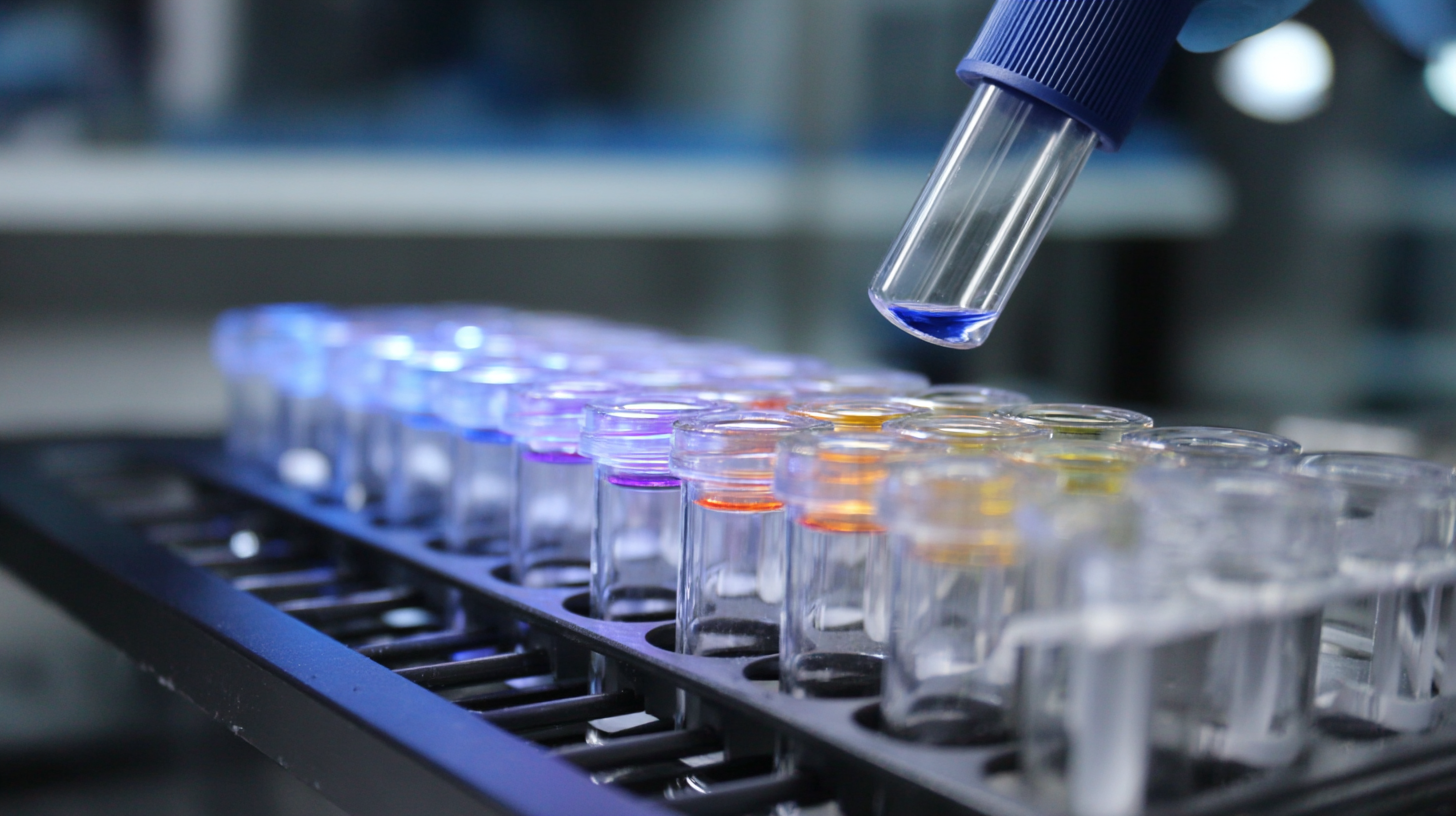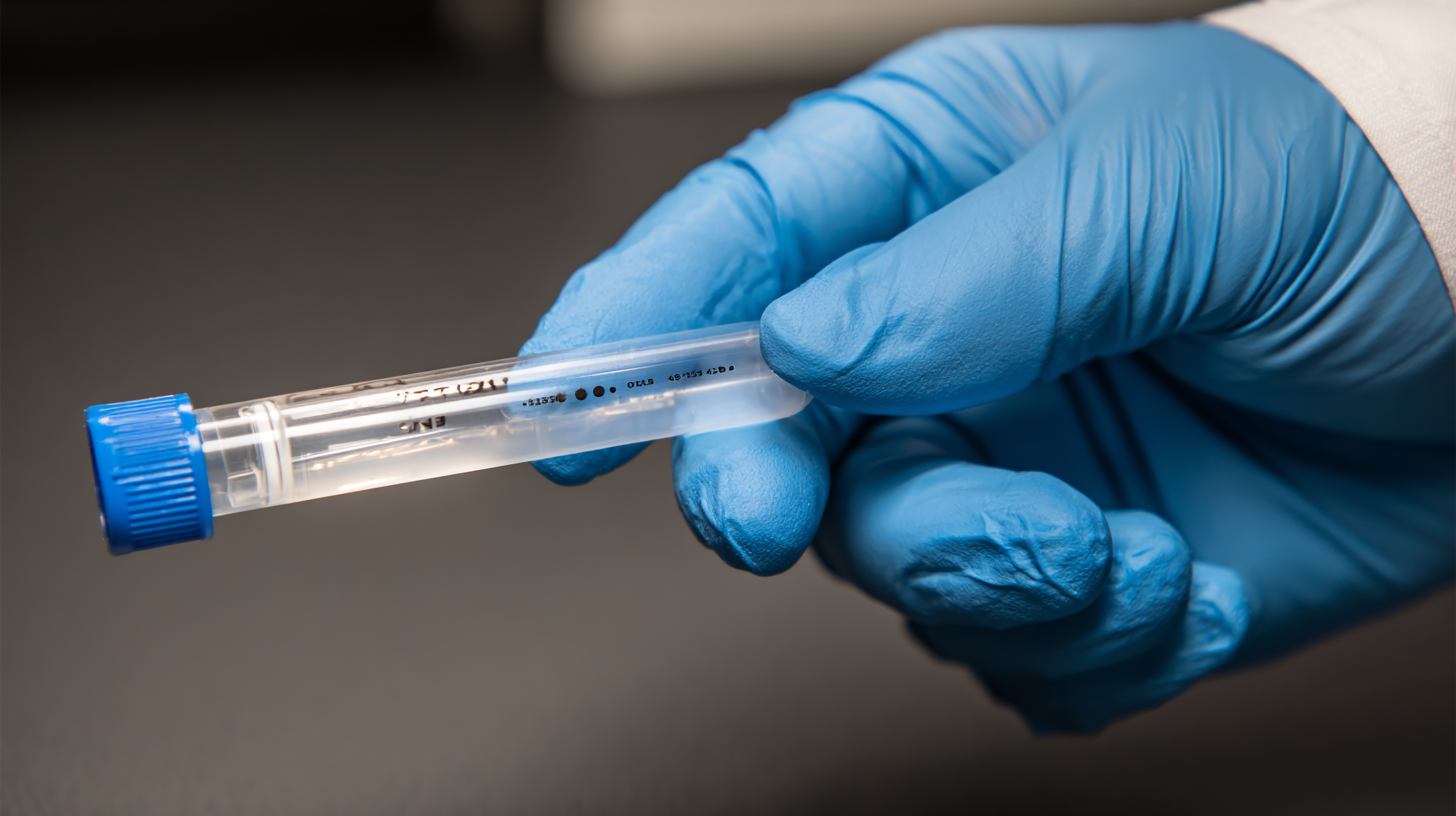 +86 178 5514 5298
+86 178 5514 5298
Leave Your Message
-
 CONTACT NUMBER
CONTACT NUMBER -
 CONTACT NUMBER
CONTACT NUMBER -
 CONTACT NUMBER
CONTACT NUMBER



In the realm of laboratory testing and analysis, the choice of equipment can significantly influence efficiency and accuracy. One such critical component is the specimen sleeve, which plays a vital role in protecting and managing samples. However, as laboratories strive for enhanced performance, many are exploring alternatives to the traditional specimen sleeve. These alternatives promise not only to mitigate common issues associated with standard sleeves—such as durability and contamination risks—but also to introduce innovative features that cater to various industry applications.

This blog delves into the top alternatives to the best specimen sleeve, highlighting real-world case studies that demonstrate their effectiveness while addressing the pressing problems laboratories face today. By examining these alternatives, we aim to guide laboratory professionals toward making informed decisions that enhance their operational efficiency and ultimately improve their testing outcomes.
In laboratory settings, the importance of choosing the right specimen sleeve cannot be overstated. A well-designed sleeve not only protects samples from contamination but also ensures that they are easily accessible for testing and analysis. The right materials and design improve handling efficiency and support more accurate results. This consideration becomes particularly crucial when dealing with sensitive specimens that require specific environmental conditions.
When selecting a specimen sleeve, it’s essential to assess various factors such as material compatibility, temperature resilience, and sterilization capability. Tips to consider include choosing sleeves that are specifically designed for the type of specimen being handled, whether biological or chemical. Additionally, investing in sleeves that have clear labeling options can drastically reduce the chances of mix-ups in the lab.
Moreover, always look for sleeves that provide a secure seal, which helps maintain the integrity of the specimen. To enhance laboratory efficiency, consider exploring innovative alternatives to traditional plastics, such as biodegradable options that align with modern sustainability practices. Ultimately, the right specimen sleeve can significantly streamline laboratory operations while ensuring the highest quality of research and results.

When selecting high-performance specimen sleeves, several key features play a vital role in enhancing laboratory efficiency. According to a recent report by the National Institute of Health, 80% of laboratory errors can be traced back to sample handling, making it imperative to choose specimen sleeves that minimize contamination and maintain specimen integrity. Look for sleeves that incorporate anti-static properties to prevent cling and dust accumulation, which can compromise sample quality.
Additionally, durability is a crucial factor. A study published in the Journal of Clinical Laboratory Science found that specimen sleeves made from high-grade materials significantly reduced the risk of accidental tears and leaks, leading to fewer sample re-collections and improved workflow efficiency. Features such as customizable sizes and labels also allow for better organization, enabling laboratories to streamline their processes and reduce turnaround times. Investing in these high-performance sleeves not only preserves the integrity of your specimens but also contributes to improved overall laboratory productivity.
| Specification Type | Material | Temperature Range (°C) | Volume Capacity (mL) | Closure Type | Certifications |
|---|---|---|---|---|---|
| Standard Sleeve | Polypropylene | -40 to 120 | 15 | Screw Cap | ISO 13485 |
| High-Temperature Sleeve | Polycarbonate | -20 to 140 | 10 | Snap Cap | CE |
| Cryogenic Sleeve | Cryo-Grade Polyethylene | -196 to 60 | 5 | Plug Cap | ISO 9001 |
| Biodegradable Sleeve | PLA (Polylactic Acid) | -20 to 70 | 20 | Twist Cap | ASTM D6400 |
In the realm of laboratory efficiency, the choice of specimen sleeve material can have a significant impact on cost-effectiveness and functionality. A comparative analysis of various materials utilized in specimen sleeves reveals striking differences in both performance and affordability. For instance, research indicates that using HDPE (High-Density Polyethylene) in laboratory settings not only enhances durability but also reduces overall maintenance costs. Data shows that the lifecycle cost of HDPE sleeves can be significantly lower, with a reported decrease of up to 30% in replacement expenses compared to traditional materials.
Moreover, the integration of innovative materials, such as medical-grade tampons for sample collection, paves the way for improved usability in diagnostic testing. Recent studies highlight the efficacy of these self-collected tools in detecting HPV and STIs, demonstrating comparable accuracy to standard collection methods. This novel approach not only enhances patient comfort but also streamlines laboratory workflows, minimizing the time spent on sample handling and analysis. As laboratories continue to explore cost-effective solutions, the shift toward materials that prioritize both efficiency and user experience becomes increasingly critical.
In the fast-paced environment of laboratory testing, efficiency is paramount. Innovative specimen sleeve solutions have emerged as game-changers, as evidenced by case studies that highlight their impact on laboratory performance. For instance, a prominent medical facility recently adopted a new type of specimen sleeve that incorporates advanced materials for better thermal insulation and contamination prevention. This not only expedited the transport of samples but also reduced the risk of errors, leading to more accurate results and faster turnaround times.
Another laboratory implemented modular specimen sleeves that are customizable based on the specific requirements of different tests. This flexibility allowed technicians to quickly adapt to varying sample sizes and types, ultimately streamlining workflows. As a result, the lab reported a significant decrease in processing time, which improved overall productivity. These case studies illustrate that by leveraging innovative specimen sleeve solutions, laboratories can significantly enhance their operational efficiency, paving the way for increased accuracy and reliability in test results.
As laboratory standards continue to evolve, the emergence of new technologies in specimen sleeves is reshaping efficiency across various sectors. Recent industry reports indicate that the global market for laboratory supplies, including specimen sleeves, is projected to grow at a CAGR of 5.7% from 2023 to 2030, driven by innovations aimed at enhancing specimen integrity and operational workflows. New materials, such as biocompatible polymers, are being utilized to increase durability and biomarker preservation, significantly reducing contamination risks.

Additionally, automated specimen handling systems are being integrated with advanced specimen sleeves, streamlining sorting and tracking processes. A study published by the Journal of Clinical Laboratory Analysis found that laboratories employing automated specimen management systems reported a 30% reduction in sample processing time. These advancements not only improve turnaround times but also bolster compliance with regulatory standards, ensuring that labs maintain the highest quality benchmarks while maximizing productivity. The impact of these trends is undeniable, leading laboratories toward greater accuracy and efficiency in modern diagnostics.
